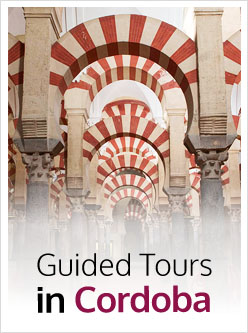The Cathedral Chapter’s economic situation after the works in the transept, the choir vault and, later, the Main Altar, prevented them from facing with great guarantee the construction of new choir stalls appropiate to the relevance of the new Main Chapel. For this reason, the canons had to move part of the stalls from the old Main Chapel to the new location.
We will need to wait more a century to see again some interest in building new choir stalls, and this was thanks to the 120,000-real donation by the archdeacon of Córdoba, José Díez de Recalde, after his death in 1742. He specified the condition that “they should be used for that purpose in a period of four years”.
Once this legacy was received, the Cathedral Chapter started to look for a master who would be in charge of carrying out the works. In order to do so, they asked several artists to present their designs, such as Tomás Jerónimo de Pedrajas, who had already worked in the Cathedral, or Alonso Gómez de Sandoval, who had also colaborated with the Cathedral Chapter years earlier. Soon afterwards, there were two more projects by Francisco Galiano and Pedro Duque Cornejo, from Seville. Pedrajas and Duque Cornejo’s designs were selected and they were ultimately asked to build a real-size stall in pine tree wood, of which Pedro Duque Cornejo’s one was the winner.
There were ten conditions required in the contract: first of all, the author had to move to the city and stay there during the works. He would commit to directly watch them and lead the building process. He would make, with his own hands, the medallions of the higher stalls, which would represent the Mysteries of Christ on one side and the Mysteries of the Virgin on the other. For the higher stalls he would also carve the medallions representing Scenes from the Old Testament. Fifth, he would make the children at the top of each stall. He would also carve the reliefs representing a martyr from Córdoba, half body, and the scene of his martyrdom on the background. On the other hand, the capitular clergy could have access to the works. The Cathedral Chapter committed to pay the agreed amount and they had to supply the necessary mahogany for the works. Finally, the tenth and last condition indicated the obligation from both parts to fulfil the contract.
The works in the new choir stalls started in March 1748, and they were never interrumpted mainly thanks to the donations by Bishop Cebrián, who donated all his possessions after he died in 1752 in order for the works to continue. At that time, they decided to pave the floor of the choir with black and white tiles, which were brought from the Italian city of Genova. Besides, that same year, Duke Cornejo was commissioned to carry out the construction of the Episcopal throne, which is currently in the centre of the ensemble. The “Ascension of Christ” stands out over the rest, a stunning relief, which is almost a real-size freestanding sculpture with more than remarkable anatomical features and quality in its composition.
In the years 1753 and 1754, apart from continuing with the mentioned works, new bronze bars were commissioned for the choir, as well as a new lectern and the black stone bench we can see nowadays in the middle of the hall.
Only the famous earthquake in Lisbon could stop the clear progression of the works, which finished in September 1757. But bad luck came to the master, as he died just two weeks before the opening, at the age of eighty, after having led the works on the stalls for almost ten years. However, the Cathedral Chapter knew how to honour his work and they celebrated a solemn funeral, whose expenses were covered by the factory. He was buried outside the choir, next to the northern side door.
According to the experts in this topic, it is an unbelievable work in its time, not only due to its quality, but to its order and symbology. The normal thing would have been to build an ensemble based on individual mid-relief figures, such as prophets, apostles, saints… which was the norm at the time. However, Cornejo was inspired by models made in the 15th and 16th centuries, where Biblical and historical scenes were more frequent. The iconographic model was not Cornejo’s work indeed, but it was the Cathedral Chapter’s responsibility, specifically José de Capilla y Bravo, who was permanently in charge of dictating the scenes that should be represented.
If you are wondering what to visit in Córdoba, the best option would be the Mosque-Cathedral, choosing one of our guided tours. This way, you will learn everything about the Choir stalls. Choosing to do high quality sightseeing is choosing ArtenCórdoba.
Text: J.A.S.C.


All the information about the monuments, festivals and places of interest in Cordoba… at a click!
If you want more information about the monuments of Cordoba, before doing your guided tours, here is the most complete guide, written by the tour guides and historians of our team
Over 2,000 items!
Mosque-Cathedral
Medina Azahara
Alcazar of the Christian Kings
Synagogue
The Museums
The Coutyards

All the information about the monuments, festivals and places of interest in Cordoba… at a click!
If you want more information about the monuments of Cordoba, before doing your guided tours, here is the most complete guide, written by the tour guides and historians of our team
Over 2,000 items!



















